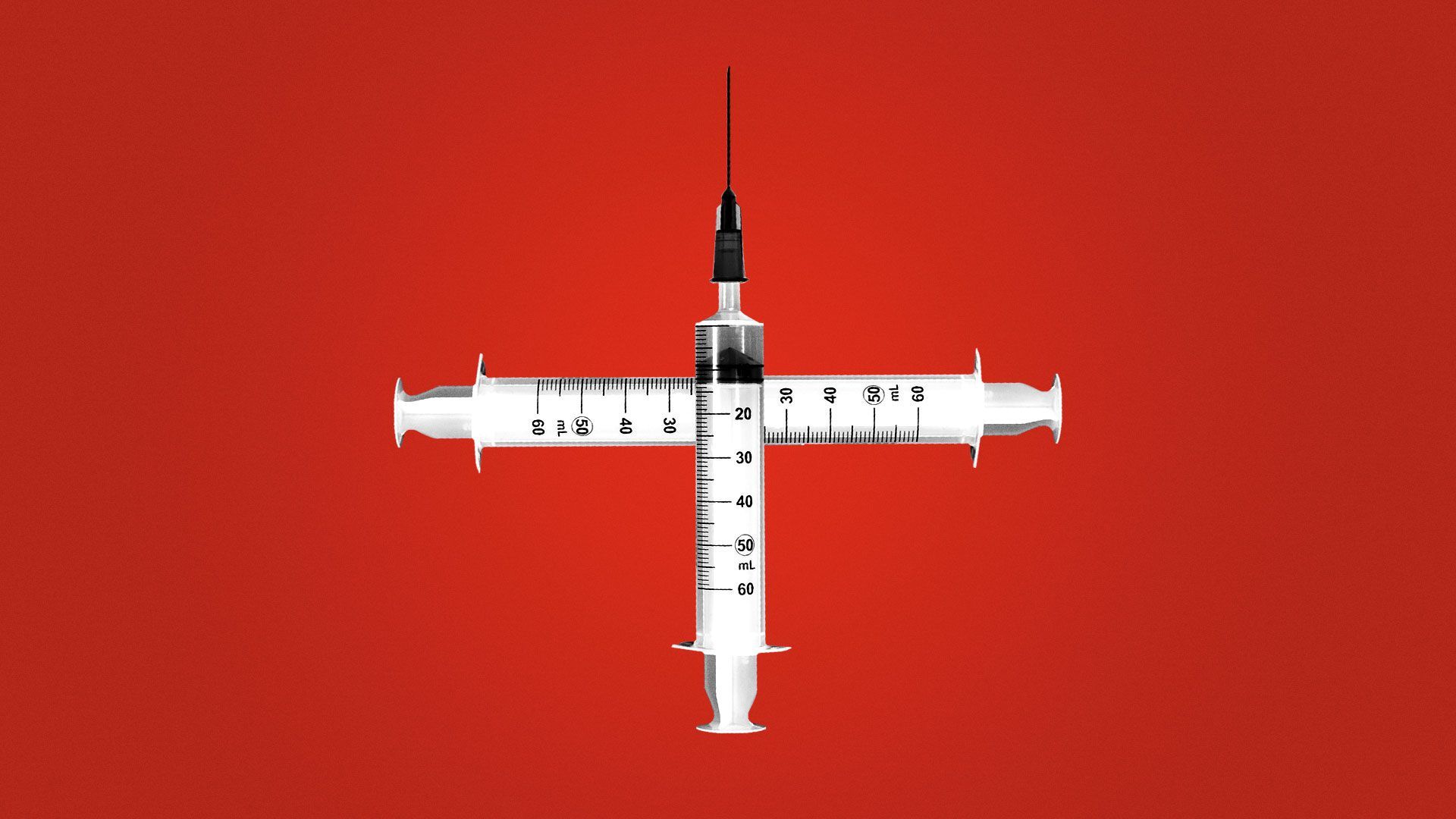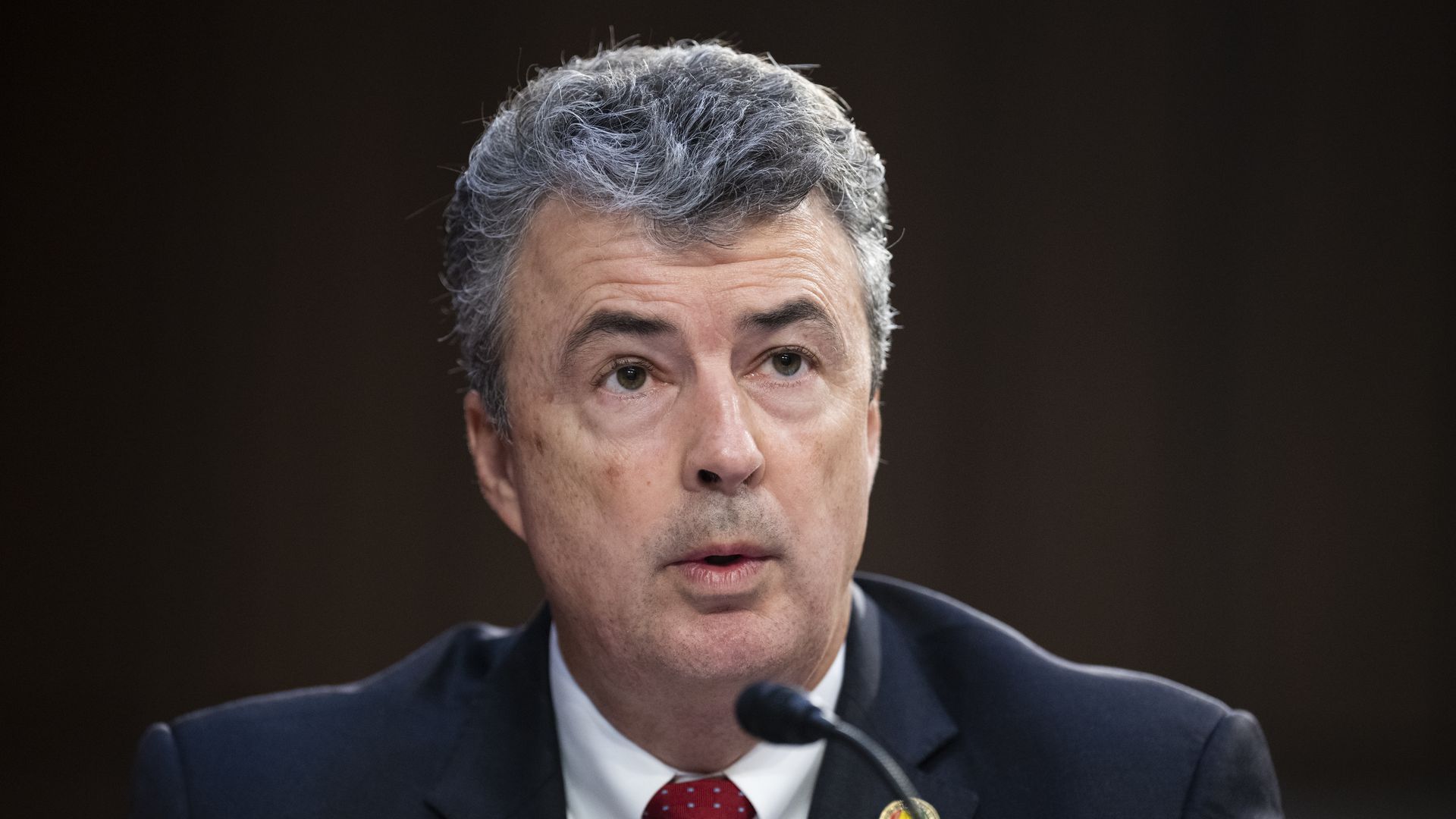| | | | | | | Presented By Emergent BioSolutions | | | | Axios Vitals | | By Tina Reed · Jun 29, 2022 | | Good morning, Vitals readers. Today's newsletter is 1,079 words or a 4-minute read. 🦩 1 fun thing: Worried about your longevity? Axios' Erica Pandey reports in the Finish Line newsletter why you should try the flamingo test. | | | | | | 1 big thing: The murky work of planning the next COVID vaccines |  Data: CDC; Chart: Erin Davis/Axios Visuals The COVID-19 vaccine strategy for the fall remains beset with unanswered questions after an FDA expert panel on Tuesday spent hours debating how and whether to update the shots, Axios' Adriel Bettelheim and I write. Why it matters: Time is running short to develop a game plan with existing vaccines losing effectiveness against new variants and more than half of Americans still without a booster dose. Driving the news: The Vaccines and Related Biological Products Advisory Committee voted 19-2 to recommend an Omicron-specific update to COVID-19 booster vaccines expected to be rolled out within the next few months. But key questions were left unanswered: - For instance, the panel didn't formally decide whether to update shots with the prevalent Omicron strain in circulation, currently the fast-spreading BA.4 and BA.5 subvariants, or the BA.1 lineage that emerged late last year, as the World Health Organization recommended.
What they're saying: "None of us has a crystal ball and we're trying to use every last ounce of what we can from predictive modeling and data that's emerging to try to get ahead of a virus that's very crafty," said top FDA vaccine regulator Peter Marks. The latest CDC data released Tuesday shows the Omicron subvariants BA.4 and BA.5 now make up more than 50% of the virus circulating in the U.S. - The profusion of new variants, combined with uncertainty over the immune responses, make devising a strategy at times resemble playing whack-a-mole.
- "The virus is changing, and what worked two years ago may not work for future variants," University of Maryland virologist Meagan Deming told Nature.
The bottom line: Despite a lack of clarity of where exactly the virus will take us next, the FDA committee ultimately erred on the side taking action, warning the virus might otherwise outrun efforts to protect against it. Go deeper. |     | | | | | | 2. White House expands monkeypox vaccine eligibility |  | | | Illustration: Eniola Odetunde/Axios | | | | Despite limited vaccine supplies, federal officials are encouraging anyone potentially exposed to a confirmed case of monkeypox in the last two weeks to get immunized, in hopes of slowing the spread of an outbreak that has grown to more than 300 confirmed cases in the United States, Axios' Arielle Dreher writes. Why it matters: Days after some local jurisdictions, like New York City, deployed their own vaccination strategies and ran out of vaccines, the federal government has committed to distributing 56,000 doses of the JYNNEOS vaccine immediately to jurisdictions where outbreaks are the most severe. State of play: Supplies in the Strategic National Stockpile are currently limited, although the Department of Health and Human Services expects to receive 296,000 additional vaccine doses in the coming weeks. Details: The federal government's expansion of vaccine eligibility allows not just close contacts identified by contact tracing to get vaccinated but those people at highest risk, including men who have had sex with men and had multiple sex partners in a venue or area with known monkeypox cases. - JYNNEOS is a two-dose vaccine that can be used even after a person is exposed to monkeypox, ideally within two weeks, to prevent them from becoming sick.
- The two doses are administered 28 days apart, and a person is considered most protected two weeks after the second dose.
What's next: Health officials are banking on using the vaccine in tandem with expanded testing efforts and engaging with community stakeholders to get the word out. |     | | | | | | 3. Maternal deaths jump during pandemic |  Maternal mortality rates rose in the U.S. after COVID-19 took root, Arielle writes about a new analysis, with deaths disproportionately impacting Hispanic and Black women. Why it matters: COVID-19 itself, along with the way the pandemic delayed care for other conditions, likely contributed to the higher death toll during 2020, adding to the burden in a country that already had the highest maternal mortality rate among developed nations. - There were large increases in the rate of maternal deaths from viral and respiratory diseases in 2020, Marie Thoma, one of the study co-authors, told Axios, which was consistent with COVID being listed as a contributing cause of death.
Details: Maternal deaths from diabetes and hypertensive disorders also increased during the pandemic, which could be linked to diagnosed COVID infections or a byproduct of women delaying necessary care, Thoma said, although the data doesn't shed light on those links. - The pandemic led to an "unprecedented" increase in Hispanic pregnant women dying in 2020 compared to previous years, Thoma added, and highlighted disparities with Black pregnant women dying at higher rates than white women.
The bottom line: "[The pandemic] created a new disparity and exacerbated existing ones," Thoma said |     | | | | | | A message from Emergent BioSolutions | | Providing biodefense protection for soldiers and civilians | | |  | | | | For decades, Emergent has provided bio-defense preparedness. Why it's important: By developing, manufacturing and strengthening medical countermeasure stockpiles, we can help protect against serious public health threats. Learn more. | | | | | | 4. Why employers offer health care | | Employers with 100 or more workers see a 47% return on investment for offering health coverage, in the form of increased productivity and other factors, according to a new analysis by Avalere provided to Axios. What they're saying: Employers experience benefits that exceed the cost of providing employer-sponsored insurance, and ROI is expected to increase to 52% by 2026, the report commissioned by the U.S. Chamber of Commerce found. - Key drivers of ROI include a projected $275.6 billion in improved productivity this year, which is expected to jump to $346.6 billion in 2026. Avalere also projects $119.2 billion from tax benefits in 2022, expected to increase to $139.7 billion by 2026. (Employer-paid health insurance premiums are exempt from income and payroll taxes.)
- The employers also benefited from recruitment and retention of talent, as well as reductions in short- and long-term disability claims.
|     | | | | | | 5. Overturned Roe cited in trans health care ban |  | | | Alabama Attorney General Steve Marshall. Photo: Tom Williams/CQ-Roll Call, Inc via Getty Images | | | | Alabama Attorney General Steve Marshall (R) on Tuesday urged a federal court to drop its block on the state's ban on gender-affirming care for trans youth, arguing such care is not protected by the Constitution, Axios' Oriana Gonzelez writes. Driving the news: Marshall used the U.S. Supreme Court's decision overturning Roe v. Wade to suggest that since the court rejected the idea that abortion cannot be protected under the 14th Amendment because it's not "deeply rooted" in the nation's history, the same could be said about access to gender-affirming care. - Alabama's S.B. 184 makes it a felony for any person to "engage in or cause" specified types of medical care for trans youth, threatening criminal prosecution to doctors, parents, guardians and any else who attempts to provide that care to a minor.
Our thought bubble: This is likely the first of many different potential applications of the overturned abortion precedent. - Prior to Roe being overturned, abortion access was protected under the due process clause of the 14th Amendment. There are several constitutional rights that are currently protected in that same way, those include same-sex relationships, marriage equality, and access to contraceptives.
|     | | | | | | A message from Emergent BioSolutions | | Providing biodefense protection for soldiers and civilians | | |  | | | | For decades, Emergent has provided bio-defense preparedness. Why it's important: By developing, manufacturing and strengthening medical countermeasure stockpiles, we can help protect against serious public health threats. Learn more. | | |  | It's called Smart Brevity®. Over 300 orgs use it — in a tool called Axios HQ — to drive productivity with clearer workplace communications. | | | | | | Axios thanks our partners for supporting our newsletters. If you're interested in advertising, learn more here.
Sponsorship has no influence on editorial content. Axios, 3100 Clarendon Blvd, Suite 1300, Arlington VA 22201 | | | You received this email because you signed up for newsletters from Axios.
Change your preferences or unsubscribe here. | | | Was this email forwarded to you?
Sign up now to get Axios in your inbox. | | | | Follow Axios on social media:    | | | | | |
No comments:
Post a Comment